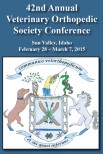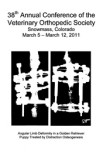Osteochondrosis is a common developmental abnormality affecting the subchondral bone of immature, large breed dogs. The purpose of this retrospective study was to describe CT lesions detected in scapulohumeral joints of 32 immature dogs undergoing CT for thoracic limb lameness. Eight dogs (14 scapulohumeral joints) had arthroscopy following imaging. Thirteen dogs (19 scapulohumeral joints) were found to have CT lesions, including 10 dogs (16 scapulohumeral joints) with subchondral bone lesions and 3 dogs with enthesopathy of the supraspinatus tendon. In one dog, subchondral bone lesions appeared as large oval defects within the mid-aspect of the glenoid cavities, bilaterally. These lesions resembled osseous cyst-like lesions commonly identified in the horse. This is the first report of such a presentation of a subchondral bone lesion in the glenoid cavity of a dog. In all dogs, small, focal, round or linear lucent defects were visible within the cortical bone at the junction of the greater tubercle and intertubercular groove. These structures were thought to represent vascular channels. Findings from this study support the use of CT as an adjunct modality for the identification and characterization of scapulohumeral subchondral bone lesions in immature dogs with thoracic limb lameness.
PREVALENCE OF COMPUTED TOMOGRAPHIC SUBCHONDRAL BONE LESIONS IN THE SCAPULOHUMERAL JOINT OF 32 IMMATURE DOGS WITH THORACIC LIMB LAMENESS.
Date
Jan-Feb 2014
Journal
Vet Radiol Ultrasound
Volume
55
Number
1
Pages
23-28









